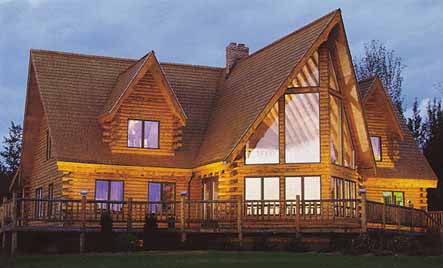Many people have log house as their second home. It can feel really fulfilling to wake up each morning with the natural wood scent. Compared to the wallpaper-clad masonry, the massive beams and logs could give us a sense of security and safety. Log houses provide us the rustic surrounding, far away from the usual hustle and bustle of modern lifestyle. However, log owners also need to know how they can proper maintain their log houses. Because log houses are essentially made from organic material, water, wind, temperature and insects may have different effects on the house. One thing that can help us improve the reliability us of the house is by choosing proper finish. Some people choose log house as their primary residences. It means that house owners should perform routine inspections on the chinking, caulking, trim, logs and other components. We also need to know what kind of sealer to choose. There are different types of finishes that we can choose.

As an example, latex and oil-based stains are essentially film-forming stains. In this case, they form a kind of film on the surface of the wood. It means that the log will have specific gloss and sheen. Unfortunately, sloppy working process could leave lap marks and drip. Finish may also flake, blister and peel due to improper applications. Depending on the species of the originating tree plant; the wood may require two, three or more coating. Maintenance coat may need to be re-applied every one or two years. When coat is applied properly, logs will be able to hold up well. This means that proper preparation and application are essential. Oil finish for log houses could be based on paraffin or linseed. The later also forms a layer of film that is similar with latex stains. We should choose oil-based finishes that are offered for typical DIY-ers. Good finish products should provide us with enough protection and we should be able to properly maintain the whole integrity of the logs. Sun, water and insects will have much harder time affecting these wood-based materials. We should be aware that some oil finish can’t be re-coated and we will need to perform the chemical stripping process. Some oil finishes are based on plants, such as linseed oil; so they may potentially feed mildew. If mildew growth is prevalent in the area, it is a good idea to avoid choosing vegetable-based products.
We may also choose paraffinic based stains and they are a true penetrating type. Compared to linseed oil, paraffinic oil has thinner consistency and it is able to absorb deeper to the wood. Depending on the condition and the age of the wood, the actual absorption rate could be twice faster than linseed oil. Because paraffin is based on petroleum material, it doesn’t really attract mildew. Because paraffin-based oil has better penetration, it wouldn’t leave the lap marks and dripping pattern. There’s no peeling or blistering; because the finish is absorbed completely to the wood.

